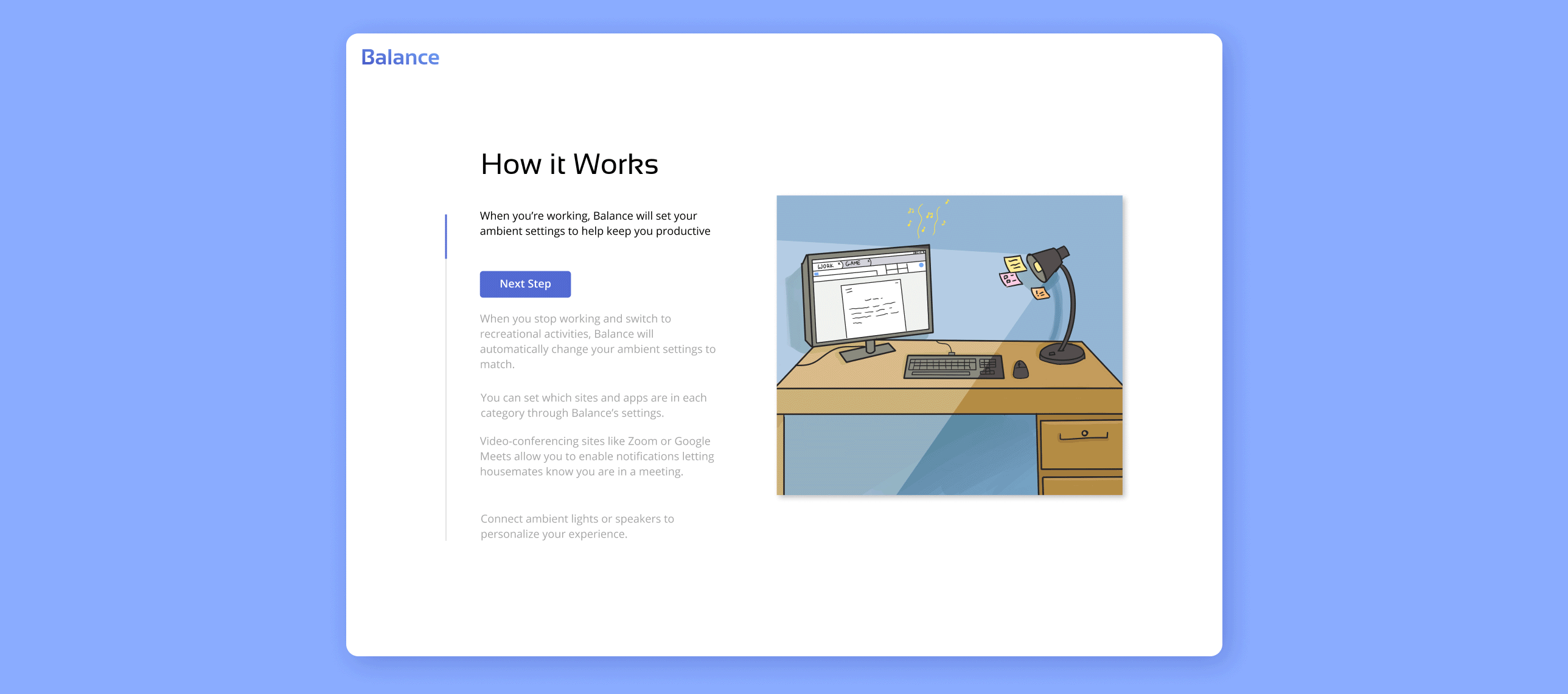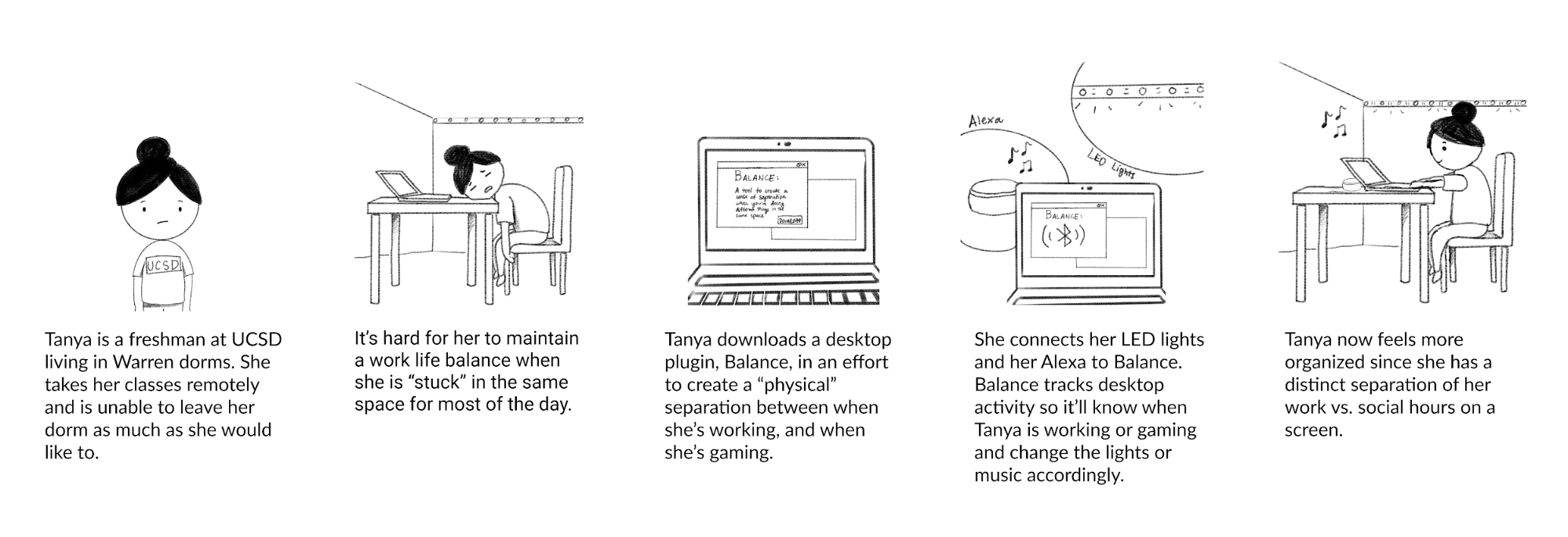SONY: Connected Learning Pathway
Designing ways to stay connected in a remote society

Problem
As part of the Connected Learning Pathways program, I was on a team given a design brief by SONY with 10 weeks to conceptualize a potential solution. My team’s brief was: “Balancing work and home life can be difficult in many contexts, but the rising adoption of remote work opportunities may make it harder than ever for a person to discern whether they are working from home… or living from work. How can technologies at home make it easier for young professionals to balance their work and home lives?”
Solution
Our solution was Balance, a desktop plugin to seamlessly switch between work and leisure while online. By tracking desktop activity, users can sort desktop apps and websites into categories, connect speakers and lights to change their physical environment based on these categories, and quickly and smoothly send notifications to household members when in important meetings.
Role
As the product designer with the strongest visual design skills on the team, I took lead on the prototyping and design stages of this project, as well as contributing to the ideation and research.

Process

Research
We started off by conducting user interviews with college students and young grads living in small spaces because we thought they would be the most affected by zoom fatigue and burnout from being unable to balance their work and personal lives. Students and newly graduated professionals likely could not afford to have their own separate office or workspaces and were experiencing a lot of stress as a result.
Target Users: College Students and Young Grads in Small Living Spaces
Target Users: College Students and Young Grads in Small Living Spaces
Insights

Need to merge both their personal items and their work items in one setting

Needed a relatively low cost solution

On screens all day, so many suffer from Zoom fatigue

Diary Studies
By conducting diary studies on students, we were able to gain insights on how their screen time and app usage changed throughout the day. We found that overall, most users had issues with staying on task - in the morning, they were very motivated and only had tabs for work/class open. During lunch breaks, they’d open new tabs and start engaging with social apps. By evening, they are struggling to split their attention between work and recreation.
At this stage, we decided to redefine our problem space. Initially, we set out to combat zoom fatigue, but we realized that zoom fatigue was a symptom of a larger problem: issues with the environment.
At this stage, we decided to redefine our problem space. Initially, we set out to combat zoom fatigue, but we realized that zoom fatigue was a symptom of a larger problem: issues with the environment.

Redefined Problem Space
People have too many distractions and are not as productive as they want to be while working and mentally “on-the-clock” during personal time, leading to feelings of stress and exhaustion.
Ideating
We created a persona to represent our target audience, and sketched out potential solutions, turning the most promising one into a storyboard.

Psychology of Balance: Context Dependent Memory
Our solution idea makes use of a psychological phenomenon called context dependent memory, in which the external environment in which a task is first performed is encoded along with those memories and recreating that environment can improve memory and performance later. For example, it’s helpful to take exams in the same room in which a class was held because the context ( the classroom in this example) acts like a trigger for the memories. With Balance, users can connect lights and/or music (tailored to their preferences) to different tasks such as working vs. socializing, creating a different environment for each task.
Prototyping
Illustrated prototype of the desktop plugin(Clicking on the different tabs on the screen changes the ambient lighting and music)

We then conducted a real life simulation of Balance where we taped a colored piece of paper over a desk lamp and changed the light color each time our user switched from work to leisure. Our simulation received positive feedback, with the user stating that they “were able to concentrate better on work and not get so distracted”


Final Designs
